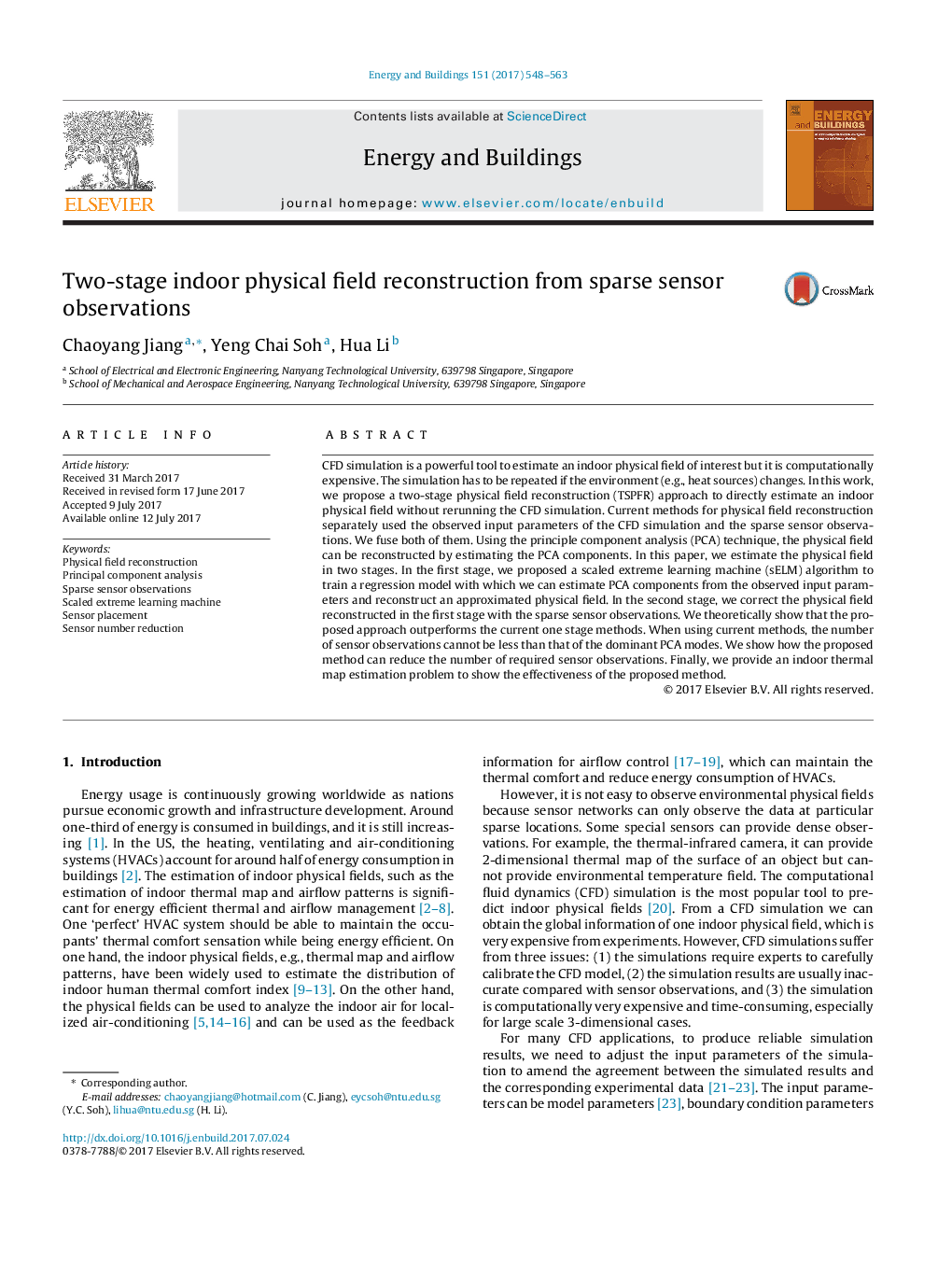| Article ID | Journal | Published Year | Pages | File Type |
|---|---|---|---|---|
| 6481138 | Energy and Buildings | 2017 | 16 Pages |
â¢We fuse the input parameters of a CFD simulation and sparse sensor observations for better indoor physical field reconstruction.â¢We provide a more effective regression model to estimate the PCA components from input parameters of the CFD simulation.â¢We theoretically show why the proposed approach outperforms the current one-stage methods.â¢Using the proposed method, we can reduce the number of sensor observations but guarantee the reconstruction performance.â¢The proposed method is shown effective to estimate an indoor thermal map.
CFD simulation is a powerful tool to estimate an indoor physical field of interest but it is computationally expensive. The simulation has to be repeated if the environment (e.g., heat sources) changes. In this work, we propose a two-stage physical field reconstruction (TSPFR) approach to directly estimate an indoor physical field without rerunning the CFD simulation. Current methods for physical field reconstruction separately used the observed input parameters of the CFD simulation and the sparse sensor observations. We fuse both of them. Using the principle component analysis (PCA) technique, the physical field can be reconstructed by estimating the PCA components. In this paper, we estimate the physical field in two stages. In the first stage, we proposed a scaled extreme learning machine (sELM) algorithm to train a regression model with which we can estimate PCA components from the observed input parameters and reconstruct an approximated physical field. In the second stage, we correct the physical field reconstructed in the first stage with the sparse sensor observations. We theoretically show that the proposed approach outperforms the current one stage methods. When using current methods, the number of sensor observations cannot be less than that of the dominant PCA modes. We show how the proposed method can reduce the number of required sensor observations. Finally, we provide an indoor thermal map estimation problem to show the effectiveness of the proposed method.
